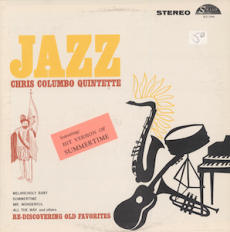
Daily Dose Of Jazz…
Joseph Christopher Columbus Morris was born on June 17, 1902 in Greeenville, North Carolina. He led his own band from the 1930s into the late 1940s, holding a residency at the Savoy Ballroom for a period. During the mid 1940s he began drumming behind Louis Jordan, remaining with him until 1952. In the mid-to-late 1950s, Columbo backed Wild Bill Davis’s organ combo, and he recorded with Duke Ellington in 1967.
He worked again as a leader in the 1970s, in addition to doing tours of Europe with Davis. While in France he played with Floyd Smith, Al Grey, Eddie “Cleanhead” Vinson, Buddy Tate, and Milt Buckner. He got his first professional gig playing with Fletcher Henderson in 1921. Between the 1920s and the 1960s, Columbo played at most of the city’s nightclubs, and led the Club Harlem Orchestra for 34 years until 1978, when the club shut its doors.
Columbo worked, recorded, and toured with prominent jazz artists including Dizzy Gillespie, Louis Armstrong and Ella Fitzgerald. He did an album on the Strand label called Jazz: Re-Discovering Old Favorites by the Chris Columbo Quintette featuring organist Johnny “Hammond” Smith. He appeared in the 1945 film It Happened In Harlem, based on the Harlem nightclub Smalls Paradise and the 1947 film Look Out Sister.
Prior to suffering a stroke in 1993 which partially paralyzed, Columbo was the oldest working musician in Atlantic City. Chris’ band went on to perform at practically every Atlantic City casino hotel. At the time of his stroke, he was playing regularly at the Showboat.
Drummer Chris Columbo, who was a father figure to Sonny Payne, who was also known as Crazy Chris Columbo and sometimes credited as Joe Morris on record, died on August 20, 2002 in New Jersey. He was 100 years old.
More Posts: bandleader,drums,history,instrumental,jazz,music
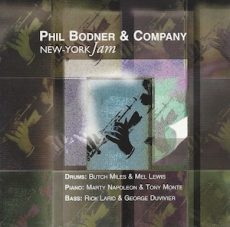
Daily Dose Of Jazz…
Philip L. Bodner was born in Waterbury, Connecticut on June 13, 1917 and worked as a studio musician in the 1940s and 1950s in New York City. He recorded with Benny Goodman and with Miles Davis and Gil Evans in 1958. The 1960s saw him playing with Oliver Nelson and J.J. Johnson.
During the Sixties he organized The Brass Ring, a group modeled after Herb Alpert and the Tijuana Brass. The group released nine albums between 1966 and 1972 and associations in the 1970s included Oscar Peterson, Yusef Lateef, Peanuts Hucko, Wild Bill Davison, and Ralph Sutton.
Bodner played the signature piccolo part on Van McCoy’s disco hit song The Hustle. During that period he also played with Ralph Sutton and Johnny Varro, worked with Mingus Epitaph, and arranged Louie Bellson’s tribute to Duke Ellington’s Black, Brown and Beige.
He worked in a swing style with Marty Napoleon, Mel Lewis, and George Duvivier in the 1980s and played with Maxine Sullivan and Barbara Carroll. Over the course of his career he recorded five albums as a leader, and eleven as a sideman with Coleman Hawkins, Cootie Williams, Miles Davis, Joe Wilder, Paul Desmond, Wes Montgomery, Cal Tjader, Mel Davis, George Benson, Freddie Hubbard, and Joey DeFrancesco.
Clarinetist and studio musician Phil Bodner, who also played flute, oboe, saxophone, and English horn, died in New York City on February 24, 2008, at age 90.
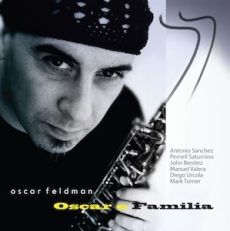
Daily Dose Of Jazz…
Oscar Feldman was born on June 12, 1961 in Cordoba, Argentina listening to his father’s jazz collection. He attended Conservatorio Provincial de Musica and was soon part of the prominent music scene in his hometown, becoming a founding member of acclaimed band Los Musicos del Centro.
Beginning in 1979 when he was 19 Oscar accepted an invitation to join bandoneonist Hermeto Pascoal and Dino Saluzzi to join his group. Moving to Buenos Aires, Argentina his career took off and he became a sought after studio musician. He recorded more than 40 albums as a sideman and toured with Argentina’s most prominent artists. Winning the Outstanding Performance Award as the Best Soloist in Fusion in 1986, he went on to procure the Achievement Scholarship Award from Berklee College of Music and graduated cum laude in 1995 with a Major in Professional Music.
Realizing he could bridge two worlds he joined Dizzy Gillespie’s United Nations Orchestra conducted by Paquito D’ Rivera. Moving to New York City his reputation grew as a versatile musician, and worked with Al Di Meola, Eumir Deodato, Jeff Tain Watts, Avantango, Alex Acuna, Bebo Valdes and His All Star Latin Jazz Band. He toured and performed across the United States, Europe and Africa.
As a leader Feldman has led numerous tours Horacio Negro Hernandez, Alex Acuna, Dave Samuels, Otmaro Ruiz and Tom Kennedy. As an educator he is currently on the faculty at the New York Jazz Academy, has taught workshops and clinics at Berklee College of Music in Boston, Massachusetts. He leads his own music jam classes weekly in New York and has written an article for Down Beat Magazine.
By the end of the 1990’s he recorded his debut as a leader El Angel on the Songosaurus record label. For his sophmore ten track album Oscar e Familia was released in 2009 on Sunnyside, he put together a Pan-American cast of Mexican drummer Antonio Sanchez, Cuban pianist Manuel Valera, Puerto Rican bassist John Benitez and Curacao percussion master Pernell Saturnino.
Alto saxophonist and composer Oscar Feldman. known for his splendid tonalities and melodically outstanding charts, continues to transcend his musical horizons.
More Posts: bandleader,composer,history,instrumental,jazz,music,saxophone
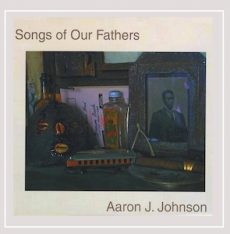
Daily Dose Of Jazz…
Aaron J. Johnson was born in Washington, D.C. on June 10, 1958. He studied piano and drums before taking up the trombone at age 12. While in high school he frequently performed with area funk bands but also conducted and arranged for student ensembles under the direction of noted trumpeter Peter D. Ford. It was Ford who gave him his first professional gigs and introduced him to Ellington alumni, bandleader and alto saxophonist Rick Henderson.
Although pursuing degrees in electrical engineering, Johnson remained active as a trombonist and bass trombonist throughout his college years. He had the good fortune to play with the University of Pittsburgh Jazz Ensemble under the direction of Kenny Clarke and Nathan Davis. Following college Aaron continued gigging around D.C. and the New York area, studying privately with reed multi-instrumentalist Makanda Ken McIntyre.
By the early 1990s Johnson established himself as an experienced and valuable sideman, composer and arranger. He has since recorded and performed with a multitude of major artists and ensembles to include Reggie Workman, Jimmy Heath, Charles Tolliver, Oliver Lake, Muhal Richard Abrams, Bill Lee, Frank Lacy, The Mingus Big Band, the Count Basie Orchestra, Steve Turre’s Sanctified Shells, the Lincoln Center Jazz Orchestra and the Smithsonian Jazz Masterworks Orchestra.
He has received the New Jersey State Council Fellowship in Music Composition (2000) Aaron Johnson has composed and arranged works performed or recorded by Frank Foster, Steve Turre, Frank Lacy, the Nancie Banks Orchestra, and Paradigm Shift. He has been featured in film scores, television commercials and public radio broadcasts.
Trombonist Aaron Johnson is currently in Columbia University’s Musicology doctorate program and has released his debut album Songs Of Our Fathers and continues to perform.
More Posts: bandleader,history,instrumental,jazz,music,trombone
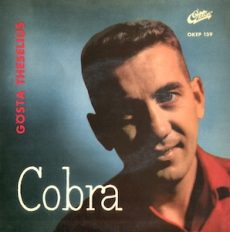
Daily Dose Of Jazz…
Gösta Theselius (was born June 9, 1922 in Stockholm, Sweden and was the younger brother of musician Hans Theselius.
He worked in the 1940s with a number of European big bands, including those of Thore Jederby, Hakan von Eichwald, Sam Samson, Lulle Elboj, and Thore Ehrling.
He played jazz into the 1950s, both as a saxophonist and a pianist. The latter instrument with Benny Bailey, Arne Domnerus, James Moody, and Charlie Parker, and composed copiously for film in the 1950s and 1960s.
Arranger, composer, film scorer, pianist and saxophonist Gösta Theselius died in Stockholm on January 24, 1976.
More Posts: arranger,bandleader,composer,film scorer,history,instrumental,jazz,music,piano,saxophone


